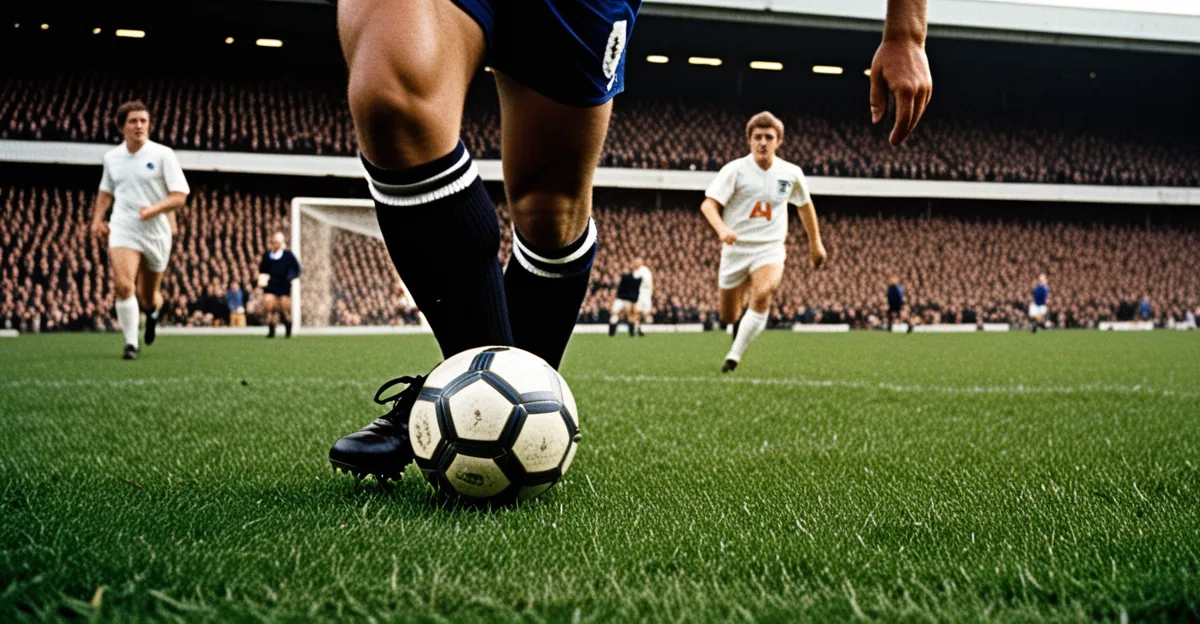Chronological Milestones in UK Football Evolution
The history of football in the UK is rich with pivotal moments that shaped the modern game. Originally, football was a chaotic, unregulated pastime until the mid-19th century when standardized rules began to emerge. The establishment of the Football Association in 1863 marked a turning point, creating the first unified rule set. This was crucial for the evolution of football, allowing organized competition to flourish.
Looking at the football timeline UK from the 1940s onwards, each decade brought distinct changes. The post-war years saw the sport regain popularity, with tactical developments and greater professionalism. The 1960s introduced more strategic approaches to play, influenced by international styles. By the 1990s, the formation of the Premier League transformed the commercial and cultural landscape of UK football. Fan experiences evolved alongside, with stadium safety improvements and enhanced broadcasting access changing how supporters engaged with the game.
Topic to read : What Are the Long-Term Impacts of UK Sports on National Health Trends?
Over time, football’s social role also shifted, reflecting broader cultural changes. From local community gatherings to a global entertainment industry, the history of football in the UK illustrates a dynamic progression both on and off the pitch, encapsulating how the sport adapted to modern demands while maintaining its traditional roots.
Major Rule Changes and Their Impact
The history of football rules in the UK is marked by several significant football rule changes that have shaped modern gameplay. One of the earliest crucial rules was the introduction of the offside law by the Football Association in 1863, which brought order and fairness to attacking plays. Over time, changes like the introduction of the penalty kick in 1891 and the substitution rule in the 1960s further altered match dynamics.
In the same genre : How is the Popularity of Women’s Sports Growing in the UK?
How have these UK football regulations influenced tactics? For example, the back-pass rule introduced in 1992 prevented goalkeepers from handling deliberate passes from teammates, accelerating game tempo and promoting more skillful play. This led teams to adapt their strategies, emphasizing quicker decision-making and improved ball control.
Historic events have also driven rule adjustments. The Hillsborough disaster in 1989, for instance, influenced safety regulations and stadium designs rather than on-pitch rules but deeply impacted the sport’s overall governance. Additionally, recent technological rules like VAR (Video Assistant Referee) were adopted to reduce human error and increase fairness.
These football rule changes have been essential in balancing the sport’s evolving competitiveness with player safety and fan engagement, reflecting the ever-adapting landscape of UK football regulations.
Shifts in Playing Style and Tactical Innovation
The evolution of playing style in UK football reflects a constant dialogue between tradition and innovation. Early football tactics favored rigid formations like the 2-3-5 “pyramid,” emphasizing direct, physical play. Over decades, the football tactics history shows a gradual shift toward more flexible, strategic approaches. By the mid-20th century, systems such as the WM (3-2-2-3) formation introduced defensive solidity and midfield control, reshaping how teams approached matches.
How have international influences shaped strategies in UK football? Post-1960s, exposure to continental styles like Total Football and Italian catenaccio inspired British managers to incorporate ball retention and zonal marking. This cross-pollination diversified tactics, promoting a more technical, possession-oriented game alongside traditional British directness.
Another major driver in the evolution of playing style is youth development. The rise of elite youth academies, focusing on technical training and tactical intelligence, has cultivated generations of versatile players. Clubs increasingly prioritize nurturing talent with a strong understanding of modern football tactics and physical conditioning.
Together, these tactical innovations demonstrate UK football’s adaptability, blending enduring characteristics with nuanced strategies. The ongoing evolution of playing style exemplifies football’s dynamic spirit within the UK.
Evolution of League Structures and Competitions
The UK football league history began in 1888 with the formation of the Football League, the first professional league competition globally. This milestone structured competitive football, creating organized fixtures and a points system that established promotion and relegation as key elements. Over time, league restructuring responded to changing demands, culminating in the creation of the Premier League in 1992. This breakaway league revolutionized football by increasing commercial revenues and global exposure, attracting top talent and investment.
How did league changes affect clubs and audiences? The Premier League’s formation introduced lucrative TV deals, enabling clubs to enhance facilities and sign high-profile players. This restructuring also diversified football competitions UK-wide, giving rise to expanded cup tournaments such as the League Cup and enhanced European competition participation, including the UEFA Champions League. These competitions increased football’s reach and competitiveness, engaging broader audiences.
Overall, league restructuring has been pivotal to football’s growth, fostering financial development and elevating the sport’s profile. It highlights the ongoing evolution of football structures adapting to both sporting and commercial needs within the UK’s rich football timeline.
Technological Advancements in the Beautiful Game
Technological innovations have transformed UK football by enhancing fairness, performance, and fan engagement. A landmark development is VAR in football, introduced to reduce human error in crucial decisions like penalties and offside calls. VAR’s impact includes fewer contentious moments and more transparent officiating, promoting trust in refereeing while maintaining game flow. Alongside VAR, goal-line technology provides instant verification of goals, eliminating disputes and reinforcing fairness under UK football regulations.
Beyond officiating, football technology UK has advanced player performance tracking. GPS and biometric systems collect data on distance covered, heart rate, and fatigue levels. Clubs utilize this to tailor training and reduce injuries, elevating physical conditioning in line with the sport’s evolution. Additionally, analytic software supports tactical planning by breaking down opposition patterns and player tendencies, refining strategies based on real-time insights.
Stadiums and broadcasts have also seen innovations—high-definition cameras, virtual replays, and interactive fan experiences enrich viewership. These advances enhance audience connection, reflecting the ongoing evolution of football as a multifaceted spectacle within the UK. Such innovations in football collectively underscore a technology-driven shift that modernizes the game while respecting its traditional appeal.
Commercialization and Media Influence
The commercialization of football in the UK accelerated dramatically with the rise of lucrative TV rights football deals. The Premier League’s formation in 1992 marked a turning point, securing massive broadcasting contracts that injected unprecedented financial resources into the sport. How did this affect clubs? The influx of TV revenue reshaped club finances, enabling significant investment in player transfers, stadium improvements, and global marketing strategies. These developments broadened the sport’s appeal beyond traditional fan bases.
The relationship between clubs and media also evolved. Clubs became savvy at leveraging media exposure to build brand identities and international followings, using sponsorships and merchandising to expand revenue streams. This media impact on UK football transformed matchdays into global events, with televised matches reaching millions worldwide.
Additionally, the commercial boom influenced the transfer market. With increased financial power, top clubs attracted elite talent, escalating transfer fees and player wages. This cycle of growth spurred intense competition and innovation in club management.
Overall, football commercialization and the burgeoning media landscape have fundamentally changed how the sport operates, enhancing its economic footprint while shaping modern fan engagement in UK football.
Growth and Recognition of Women’s Football
The women’s football UK history has evolved significantly from early informal matches to a professional sport attracting widespread attention. Despite initial resistance and bans on women playing on Football Association pitches until 1971, the development of women’s football gained momentum in recent decades. This progress includes the establishment of the FA Women’s Super League in 2011, which professionalized the sport and increased visibility.
Notable milestones in women’s football UK history are marked by successes in major tournaments. The England women’s team reaching the semifinals of the 2019 FIFA Women’s World Cup boosted public interest and investment. Additionally, increased media coverage and sponsorship deals have enhanced the sport’s profile and provided greater opportunities for female players.
The rise of notable female players UK such as Kelly Smith and Lucy Bronze has helped inspire a new generation. Their skill and success at both club and international levels underline the growing quality of women’s football in the UK. Clubs are now investing in youth academies dedicated to female talent, reflecting sustained commitment to the sport’s evolution.
The trajectory of women’s football UK history illustrates overcoming barriers through increased professionalism, recognition, and fan support, firmly establishing women’s football as an integral part of the UK’s sporting landscape.
Notable Teams and Players Transforming the UK Game
No discussion of the history of football in the UK is complete without acknowledging the impact of legendary football teams UK and their iconic players. From early pioneers like Manchester United, Liverpool, and Celtic to modern powerhouses, these clubs have shaped football’s narrative with their success and innovation. The dominance of such teams across different decades reflects shifts in tactics, resources, and fan culture.
Who are the famous UK footballers that transformed the game? Players such as Bobby Charlton, Kenny Dalglish, and David Beckham have become symbols of excellence and influence. Their skill on the pitch combined with leadership and charisma elevated the sport’s profile both domestically and internationally. Each contributed uniquely to the football icons UK legacy by inspiring styles of play and forging club identities.
Moreover, the cultural significance of these figures extends beyond football. They embody community pride, social values, and national identity, enhancing the connection between sport and society. The sustained success of dominant clubs and the enduring popularity of celebrated players highlight their crucial role in the evolution of football within the UK. Their stories continue to inspire new generations, underscoring football’s lasting cultural and sporting legacy in Britain.
Societal Influence and Football’s Role in UK Identity
Football in the UK is deeply woven into the fabric of local communities, serving as more than just a sport. Its football culture Britain reflects identities tied to cities, neighborhoods, and shared histories, creating a strong sense of belonging. Fans often view clubs as extensions of their community, highlighting how football and society UK are interlinked.
How does football address social issues like racism and inclusion? Over recent decades, concerted efforts across clubs and governing bodies have aimed to combat discrimination through campaigns and education. Initiatives such as “Kick It Out” promote diversity, signaling football’s growing responsibility toward social progress within the UK football identity. Despite challenges, these efforts illustrate the sport’s potential as a platform for positive change.
Moreover, football acts as a mirror of broader social and political shifts. From post-war solidarity to contemporary discussions about nationalism and multiculturalism, the sport reflects evolving societal attitudes. The shared experience of football attendance or fandom fosters community cohesion while highlighting ongoing societal debates. In this way, football encapsulates the dynamic interactions between sport and society in Britain, affirming its role as a powerful cultural institution.








